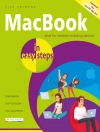Second Generation Mainframes: The IBM 7000 Series describes IBM’s second generation of mainframe computers which introduced new technology, new peripherals and advanced software. These systems were continuations of the instruction sets of the IBM 700 series with significant enhancements, but supported upwards compatibility that preserved customers’ investment in the earlier series. The use of magnetic cores, fast magnetic tapes and disks, and transistors yielded computation speeds that opened new domains for computation. Programming languages continued to be developed and enhanced, and new ones were developed for specific domains, such as SNOBOL, COBOL, and Macro Assemblers. Robust subroutine libraries for mathematical applications appeared. New operating systems provided many capabilities to programmers for data management and file systems, limited multiprocessing, timesharing, programming language support, and better error handling and control of peripherals. Early concepts in persistent file systems on magnetic disks were developed that changed the nature of job processing. The IBM 7000 series led the way in many innovative concepts that helped to establish IBM as the foremost manufacturer of computer systems. However, the diversity of the models put significant strain on IBM’s financial resources and development teams, which ultimately led to OBM’s development of the System/360 family of machines.
Stephen H. Kaisler
Second Generation Mainframes [PDF ebook]
The IBM 7000 Series
Second Generation Mainframes [PDF ebook]
The IBM 7000 Series
Koop dit e-boek en ontvang er nog 1 GRATIS!
Formaat PDF ● Pagina’s 393 ● ISBN 9781527535428 ● Uitgeverij Cambridge Scholars Publishing ● Gepubliceerd 2019 ● Downloadbare 3 keer ● Valuta EUR ● ID 7033959 ● Kopieerbeveiliging Adobe DRM
Vereist een DRM-compatibele e-boeklezer












